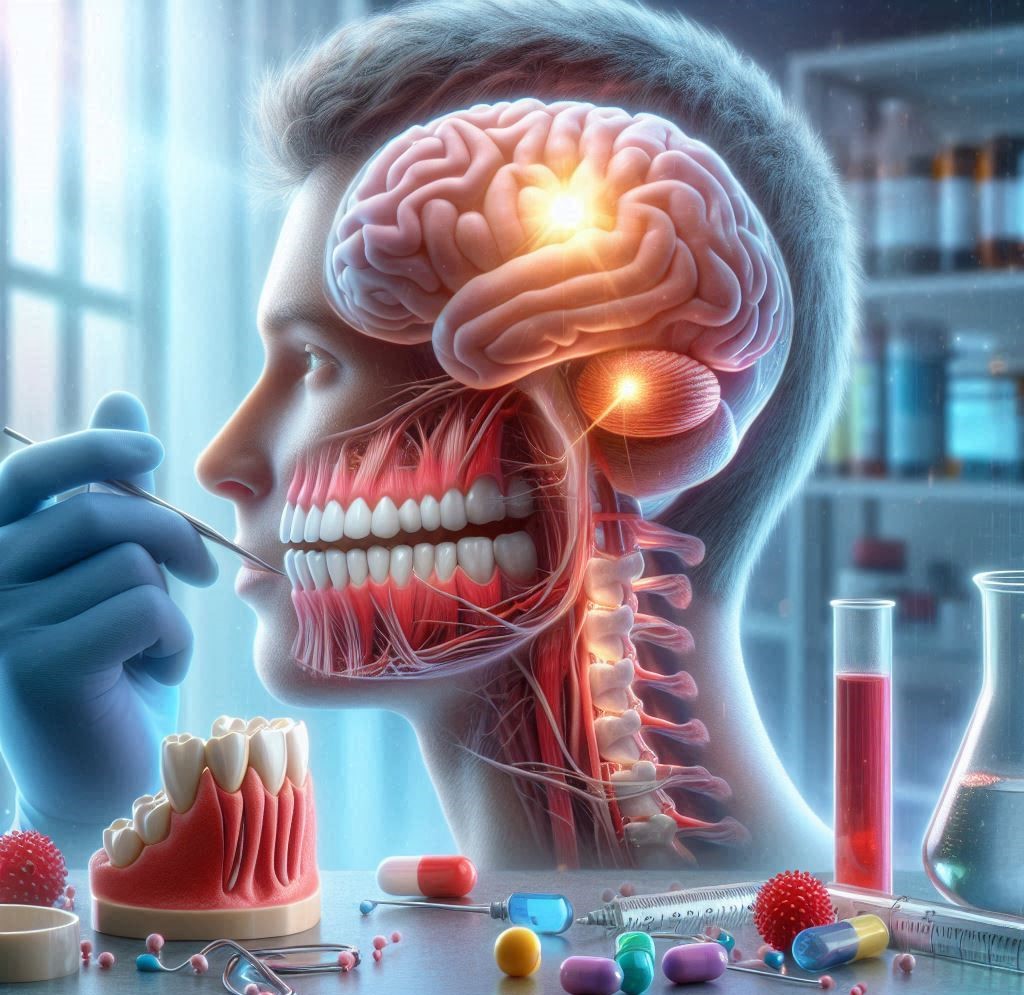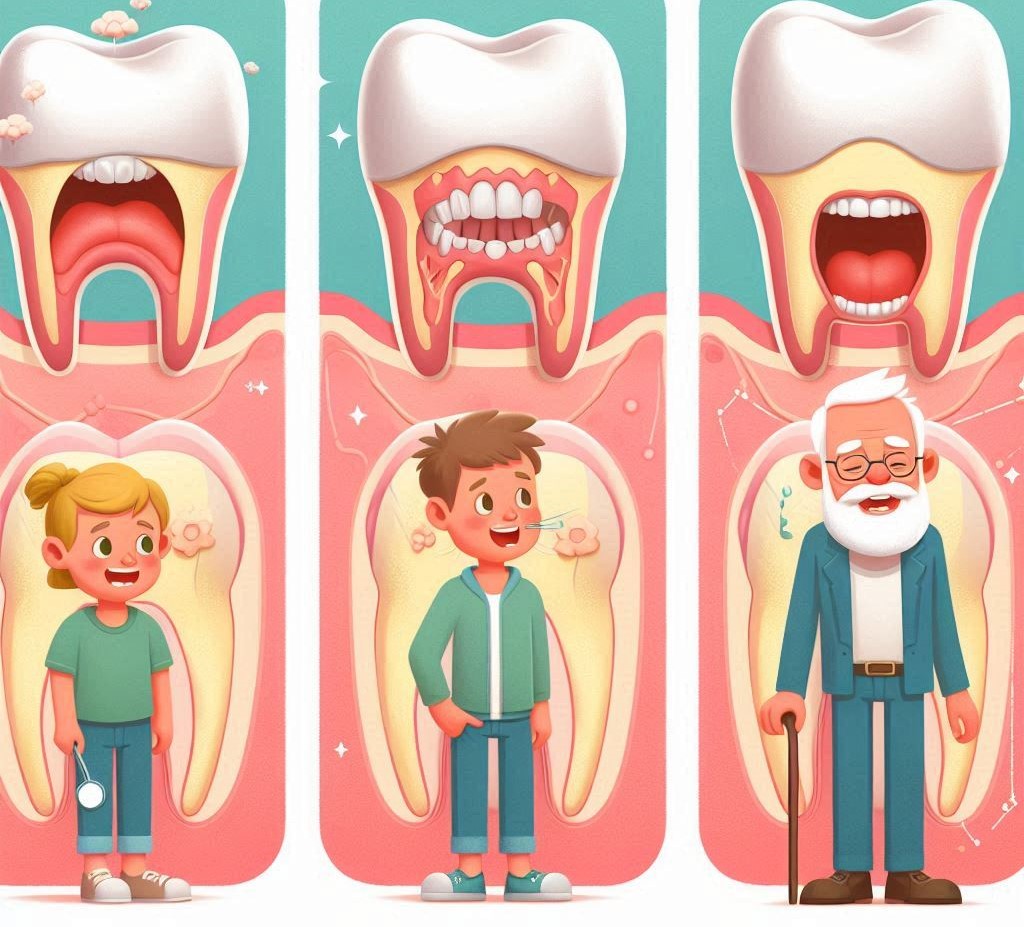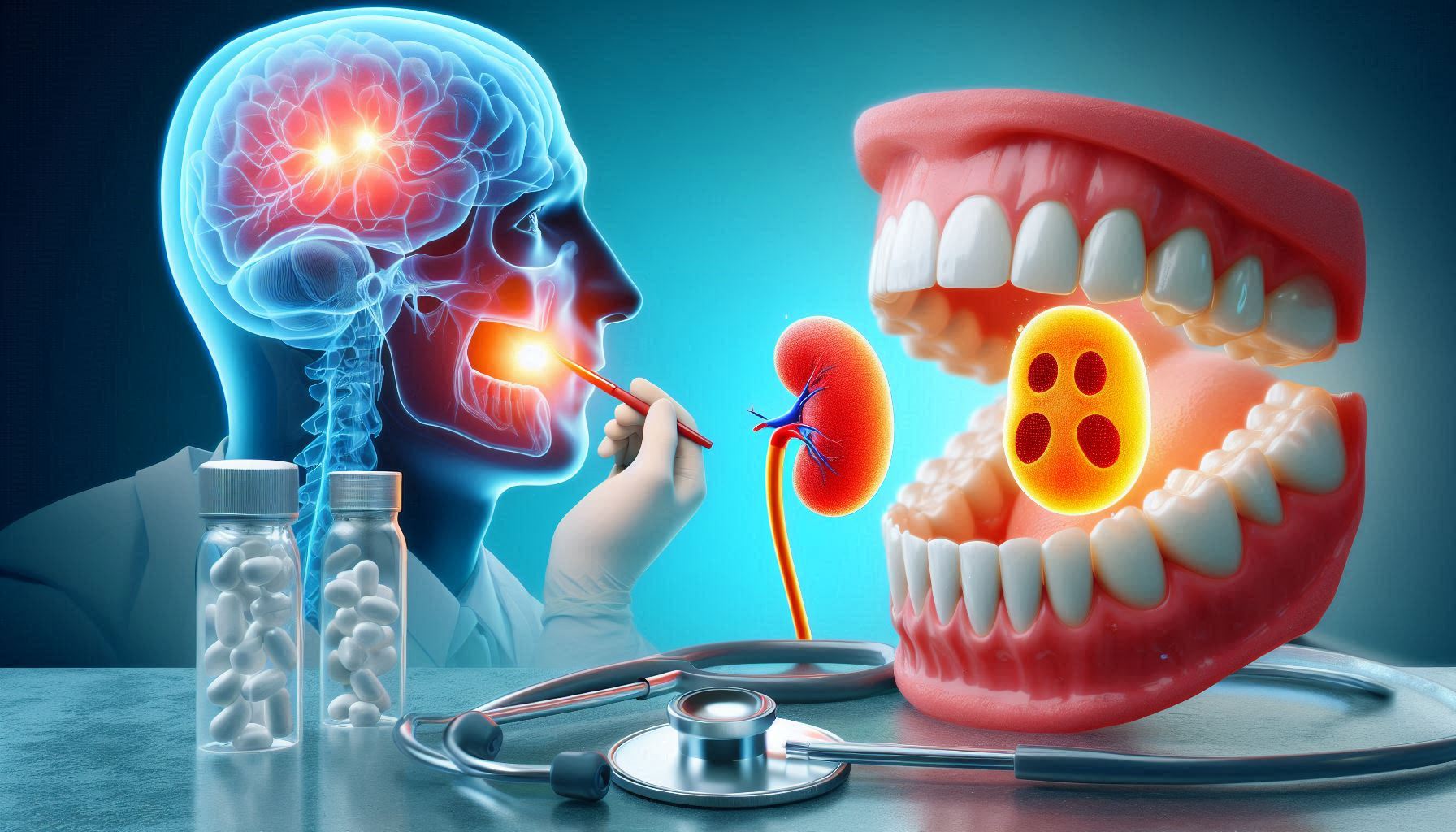The human body is an incredibly complex and intricate organism, and one of the most fascinating aspects of human development is the formation of our teeth. While most people have the standard set of 32 adult teeth, some individuals are born with extra teeth—known as supernumerary teeth. These additional teeth can develop anywhere in the mouth and can significantly impact a person’s oral health. But what causes these extra teeth to form? Is it purely a random occurrence, or are there underlying genetic and environmental factors at play?
Understanding the causes of supernumerary teeth is essential for both individuals affected by the condition and dental professionals seeking to provide the best care. Supernumerary teeth are not merely an aesthetic concern; they can affect oral function, lead to dental complications, and even cause psychological distress for those who experience them. This article will delve into the various causes of supernumerary teeth, including the genetic factors that predispose certain individuals to extra teeth and the environmental influences that may contribute to their development. Additionally, we will explore the impact of supernumerary teeth on oral health, treatment options, and preventive measures to minimize potential complications.
The development of extra teeth is a multifaceted phenomenon that involves not only genetic predisposition but also various environmental factors. For some individuals, these extra teeth may be a minor inconvenience, while for others, they may lead to significant dental issues that require intervention. By exploring both the genetic and environmental factors that contribute to the formation of supernumerary teeth, this article aims to provide a comprehensive understanding of the condition and its potential impact on oral health.
What Are Supernumerary Teeth?
Supernumerary teeth are teeth that appear in addition to the normal set of 20 primary (baby) teeth and 32 permanent teeth. These extra teeth can occur at any point during tooth development and may appear in any area of the dental arch, though they are most commonly found in the upper front teeth region (the maxilla). The extra teeth can vary greatly in terms of size, shape, and position. In some cases, they may closely resemble normal teeth, while in others, they may be more rudimentary or malformed.
The development of supernumerary teeth is an abnormality that occurs during the process of tooth formation. To understand why these extra teeth develop, it is important to first examine how teeth normally form in the mouth. During fetal development, tooth buds begin to form in the jawbone. As a child grows, these tooth buds gradually develop into primary teeth, followed by permanent teeth. The eruption of the primary teeth typically begins around six months of age, with the eruption of permanent teeth occurring later, usually around the age of six to seven years.
In the case of supernumerary teeth, an additional tooth bud forms either alongside or in place of a normal tooth. These extra teeth can take several different forms, and their presence may result in a variety of dental issues, depending on their location, size, and alignment.
Types of Supernumerary Teeth
Supernumerary teeth can be classified into several types based on their location in the mouth and their general characteristics. The most common types include:
- Mesiodens: The most common type of supernumerary tooth, typically located in the midline of the upper jaw, between the two central incisors.
- Paramolar: Supernumerary teeth located adjacent to the molars, typically behind or beside the first or second molars.
- Distomolar: Located behind the third molars (wisdom teeth), these extra teeth are less common but can cause problems similar to impacted wisdom teeth.
- Supplemental: Extra teeth that resemble the normal teeth in shape and size, often found near the molars or incisors.
The shape and size of supernumerary teeth can also vary. Some extra teeth may be similar in appearance to normal teeth, while others may be small, malformed, or rudimentary in form. In some cases, supernumerary teeth may be fully formed and functional, while others may be impacted or fail to erupt properly.
The Role of Genetics in Supernumerary Teeth
Supernumerary teeth, or extra teeth, can arise as a result of genetic predisposition. Genetics plays a significant role in determining the number, size, and type of teeth that a person develops. To understand the genetic underpinnings of supernumerary teeth, it’s essential to delve into how tooth development works at the genetic level, and what genes and mutations may contribute to the formation of extra teeth.
Genetic Basis of Tooth Development
Tooth development is a highly regulated process that begins early in fetal development. The formation of teeth is influenced by a variety of genes that control the growth and differentiation of tooth buds. Two main stages of tooth development—the initiation and morphogenesis stages—are controlled by specific genetic factors.
During the initiation stage, signaling pathways in the oral epithelium determine where and when tooth buds will form. This process is influenced by various signaling molecules, including fibroblast growth factors (FGFs), bone morphogenetic proteins (BMPs), and Sonic Hedgehog (SHH). The expression of certain genes in the oral epithelium activates these signaling pathways, promoting the formation of tooth buds.
Morphogenesis follows, during which the tooth buds undergo complex changes in shape to form distinct tooth structures (crown, root, etc.). Genes such as PAX9, MSX1, AXIN2, and Eda have been identified as playing key roles in the morphogenesis of teeth. Mutations or deletions in these genes can disrupt normal tooth development and may contribute to the formation of extra teeth.
Genes Linked to Supernumerary Teeth
Several specific genes have been implicated in the development of supernumerary teeth. These include:
- MSX1 (Msh Homeobox 1): The MSX1 gene plays a critical role in tooth development by regulating the formation of tooth buds. Studies have shown that mutations in this gene can lead to a variety of dental anomalies, including the development of supernumerary teeth. MSX1 mutations have been linked to conditions such as cleft lip and palate, which are often associated with the presence of extra teeth.
- PAX9 (Paired Box 9): PAX9 is another gene critical for tooth development, especially in the early stages of tooth formation. Mutations in PAX9 have been found in patients with supernumerary teeth, particularly in individuals with agenesis of other teeth, such as the third molars.
- AXIN2 (Axin 2): AXIN2 is involved in the Wnt signaling pathway, a pathway essential for cell growth and differentiation. Mutations in AXIN2 can lead to abnormalities in tooth number, and research has shown that these mutations are associated with the formation of supernumerary teeth.
- EDA (Ectodysplasin A): The EDA gene is involved in the development of ectodermal tissues, including teeth. Mutations in EDA can lead to ectodermal dysplasia, a condition often characterized by missing or malformed teeth, and in some cases, extra teeth may form.
- Runt-related transcription factor 2 (RUNX2): RUNX2 is crucial for bone development and also plays a role in tooth formation. Mutations in this gene are associated with cleidocranial dysostosis, a genetic condition that can lead to multiple supernumerary teeth.
Hereditary Syndromes and Supernumerary Teeth
Supernumerary teeth are often observed in association with certain genetic syndromes. These syndromes involve mutations or deletions of specific genes that affect tooth development, bone formation, and other bodily systems. Some of the most notable hereditary conditions associated with supernumerary teeth include:
- Cleidocranial Dysostosis: This genetic disorder affects bone development and is often characterized by delayed closure of the fontanelles (soft spots on the skull), underdeveloped clavicles (collarbones), and multiple supernumerary teeth. The condition is caused by mutations in the RUNX2 gene. Affected individuals often have a large number of extra teeth, particularly in the anterior part of the upper jaw.
- Gardner Syndrome: Gardner syndrome is a genetic disorder that leads to the development of multiple benign tumors and cysts in various parts of the body, including the jaw. Supernumerary teeth are a hallmark of this condition, and individuals may develop dozens of extra teeth. Gardner syndrome is caused by mutations in the APC gene, which is also involved in the regulation of cell growth and development.
- Cleft Lip and Palate Syndromes: Individuals born with cleft lips or palates often experience various dental anomalies, including the development of supernumerary teeth. This association is thought to be due to the disruption of the signaling pathways that control the growth and development of teeth.
Genetic Predisposition and Family History
Family history plays a significant role in the likelihood of an individual developing supernumerary teeth. In many cases, the presence of extra teeth can be traced through multiple generations. This suggests that there is a hereditary component to the condition, and individuals with a family history of supernumerary teeth are at greater risk of experiencing the condition themselves.
Studies have shown that the inheritance pattern for supernumerary teeth is often autosomal dominant, meaning that an individual only needs to inherit one copy of the mutated gene from one parent to develop extra teeth. However, the expression of the condition can vary, with some individuals having only one extra tooth, while others may develop multiple supernumerary teeth.
Environmental Factors and Their Influence on Extra Teeth
While genetics plays a substantial role in the development of supernumerary teeth, environmental factors can also contribute to the formation of extra teeth. Environmental influences during critical stages of tooth development can lead to abnormal tooth formation, including the appearance of supernumerary teeth.
Prenatal Factors
The development of teeth begins early in fetal development, and any factors that affect the fetus during pregnancy can potentially influence the development of extra teeth. For instance, maternal health during pregnancy can significantly impact the development of the child’s teeth. Poor maternal nutrition, smoking, stress, and exposure to environmental toxins may disrupt the normal formation of tooth buds and lead to the development of supernumerary teeth.
- Maternal Smoking: Smoking during pregnancy has been shown to adversely affect fetal development, including dental development. Research suggests that maternal smoking may increase the risk of dental anomalies, including supernumerary teeth. The harmful chemicals in cigarette smoke can interfere with normal cell differentiation and growth in the developing fetus, leading to tooth development abnormalities.
- Nutritional Deficiencies: Maternal malnutrition, particularly deficiencies in key vitamins and minerals such as calcium, vitamin D, and folic acid, can affect the development of the fetal teeth. Inadequate nutrition may lead to developmental defects, including the formation of extra teeth.
- Stress and Hormonal Imbalances: Chronic stress and hormonal imbalances in the mother during pregnancy may disrupt the normal development of the fetus, including the formation of the dental arch. These disruptions could increase the likelihood of supernumerary teeth.
Birth-Related Factors
In some cases, factors related to birth and early childhood can also influence tooth development. Premature birth, low birth weight, and other birth-related complications have been associated with an increased risk of dental abnormalities, including supernumerary teeth.
- Prematurity and Low Birth Weight: Premature infants or those with low birth weight may experience developmental delays in various parts of the body, including the teeth. These individuals may be at higher risk for developing supernumerary teeth due to interrupted growth and abnormal differentiation during the early stages of tooth development.
- Trauma During Birth: Physical trauma during birth can sometimes affect the oral cavity and disrupt normal tooth development. In rare cases, this trauma may contribute to the formation of extra teeth.
Early Childhood Habits
Certain habits in early childhood, such as thumb sucking or prolonged use of pacifiers, may influence the development of teeth. These habits can exert pressure on the dental arch, causing misalignment or creating spaces that may lead to the formation of extra teeth.
The Connection Between Supernumerary Teeth and Oral Health
Supernumerary teeth can have significant implications for an individual’s oral health. While some people may experience few or no symptoms from extra teeth, others may encounter serious dental issues that require intervention. The impact of supernumerary teeth on oral health varies depending on factors such as the size, location, and alignment of the extra teeth.
Crowding and Misalignment
One of the most common consequences of supernumerary teeth is overcrowding. The presence of extra teeth can disrupt the alignment of the existing teeth, leading to crooked or misaligned teeth. This misalignment can cause difficulties with chewing, speaking, and maintaining proper oral hygiene.
Overcrowding can also lead to the eruption of teeth in abnormal positions, which may make them harder to clean, increasing the risk of tooth decay and gum disease. Additionally, misaligned teeth may be more prone to chipping or wearing down.
Risk of Impaction
Supernumerary teeth that fail to erupt properly can become impacted, meaning that they remain trapped within the jawbone or under the gum line. Impacted teeth can cause pain, inflammation, and infection. In some cases, impacted supernumerary teeth may exert pressure on adjacent teeth, causing damage or shifting the alignment of the dental arch.
Cyst Formation
In rare cases, the presence of supernumerary teeth may lead to the development of cysts within the jaw. These cysts, called dentigerous cysts, form around an impacted tooth and can lead to bone loss or damage if left untreated. Cysts associated with supernumerary teeth may require surgical intervention to remove the cyst and the impacted tooth.
Treatment Options for Supernumerary Teeth
Treatment for supernumerary teeth varies depending on the individual case. While some extra teeth may not require any intervention, others may cause significant dental problems that necessitate removal or other forms of treatment.
Conservative Management vs. Surgical Intervention
If supernumerary teeth are not causing any immediate issues, a dentist may choose to monitor their development over time. In cases where extra teeth are causing pain, misalignment, or other oral health problems, surgical intervention may be necessary.
- Removal of Supernumerary Teeth: The most common treatment for problematic supernumerary teeth is their removal. The decision to remove extra teeth is usually based on factors such as the tooth’s position, the risk of impaction, and the potential for oral health complications. In many cases, extraction is necessary to avoid further damage to surrounding teeth and tissues.
- Orthodontic Treatment: After the removal of supernumerary teeth, orthodontic treatment may be recommended to realign the remaining teeth. Braces, retainers, or other orthodontic appliances may help restore proper alignment and function to the dental arch.
Psychological and Social Impact of Supernumerary Teeth
The presence of supernumerary teeth can also have a psychological and social impact, particularly in children and adolescents. Many individuals with visible extra teeth may experience feelings of self-consciousness or embarrassment, which can affect their self-esteem and social interactions.
Psychological Effects on Children and Adults
For children, the presence of supernumerary teeth can lead to feelings of insecurity and anxiety. The condition may cause children to feel different from their peers, particularly if the extra teeth are visible or cause noticeable changes in their smile. This can lead to issues with body image and self-esteem, which can carry over into adolescence and adulthood.
Social Consequences
Social interactions may also be affected by the appearance of supernumerary teeth. People with visible extra teeth may avoid smiling or speaking in public, leading to social withdrawal. Additionally, the fear of judgment from others can contribute to anxiety or a lack of confidence.
Addressing Emotional Concerns
Dental professionals should be sensitive to the psychological impact that supernumerary teeth can have on patients. Providing emotional support and counseling can help patients feel more comfortable with their condition and the necessary treatment.
Preventive Measures and Early Intervention
Prevention of supernumerary teeth is not always possible, particularly in cases where genetics play a significant role. However, early detection and intervention can help minimize the impact of extra teeth and prevent more serious complications from developing.
Early Diagnosis
Regular dental check-ups are essential for detecting supernumerary teeth early. X-rays and imaging techniques can help identify extra teeth before they cause any major issues. Early intervention allows dentists to address potential problems, such as impaction or misalignment, before they become more complex.
Preventive Care
While there is no way to completely prevent the formation of supernumerary teeth, maintaining good oral health practices during pregnancy and childhood can help minimize the risk of dental abnormalities. A balanced diet, avoiding tobacco and excessive alcohol consumption, and seeking early dental care can all play a role in reducing the risk of complications.
Conclusion
The presence of supernumerary teeth can be a challenging dental condition, with genetic and environmental factors playing crucial roles in their development. Understanding these causes—whether rooted in genetic mutations or influenced by environmental factors—can help dental professionals better diagnose, treat, and support individuals affected by extra teeth. Supernumerary teeth may cause complications such as misalignment, impaction, and infection, but with early intervention, many of these issues can be managed effectively.
By staying informed about genetic risks, promoting early dental visits, and offering emotional support to patients, we can ensure that those with supernumerary teeth receive the best possible care. The future of dental research and genetic studies will likely continue to uncover more about how supernumerary teeth develop and how we can further optimize treatment for those affected by this condition.
SOURCES
Agarwal, A., & Sharma, R. (2016). Genetic factors in the development of supernumerary teeth: An overview. Journal of Dental Research, 95(3), 235-242.
Alvares, P. G., Júnior, S. G. P., & Guimarães, L. (2017). Supernumerary teeth: A clinical review. Journal of Clinical and Experimental Dentistry, 9(3), 120-126.
Bardellini, E., Conti, G., Lodi, G., & Petti, S. (2014). Genetic and environmental factors contributing to supernumerary teeth: A systematic review. Oral Surgery, Oral Medicine, Oral Pathology, Oral Radiology, 118(2), 199-206.
Canger, E. M., & Küçükkeles, N. (2014). Supernumerary teeth: A review of the literature. Journal of Clinical Pediatric Dentistry, 38(2), 105-110.
Cohen, B. I., & Mitsumori, A. (2019). Hereditary factors in dental anomalies: The case of supernumerary teeth. International Journal of Dentistry and Oral Health, 5(4), 143-148.
Dachi, S. F., & Holt, R. D. (1959). A survey of 3,874 routine full-mouth radiographs. Oral Surgery, Oral Medicine, Oral Pathology, 12(9), 1106-1116.
Gardner, E. (1951). Multiple supernumerary teeth in a patient with Gardner’s syndrome. Archives of Surgery, 63(6), 834-836.
Gorlin, R. J., Cohen, M. M., & Harrison, E. G. (2001). Genodermatoses and their oral manifestations. 5th ed. New York: Oxford University Press.
Kahn, E. S., & Buchan, J. P. (2013). Genetic syndromes associated with dental anomalies: A review of the literature. Journal of Clinical Orthodontics, 47(8), 485-492.
Kumar, A., Singh, A. K., & Prakash, P. (2018). Supernumerary teeth in children: A genetic and environmental overview. Journal of Pediatric Dentistry, 42(5), 319-324.
Lestrel, P. E. (2014). Development of the human dentition: Genetic influences and anomalies. American Journal of Human Biology, 26(3), 262-272.
Loe, H., & Silness, J. (1963). Periodontal disease in pregnancy. Acta Odontologica Scandinavica, 21(6), 533-551.
Melis, M. (2015). Genetic implications of supernumerary teeth. Journal of Oral and Maxillofacial Surgery, 73(7), 1306-1313.
Pintos, R., Mignogna, M. D., & Tatti, N. (2016). Hereditary syndromes related to dental anomalies: An insight into the clinical, radiographic, and genetic features. The Journal of Genetic Dentistry, 54(1), 36-44.
Rattan, V., & Singh, M. (2019). Role of environmental factors in the development of dental anomalies: Supernumerary teeth. Journal of Environmental Dentistry, 14(2), 109-115.
Sumer, A. P., & Ozdemir, K. (2017). Pathological and genetic etiology of supernumerary teeth. Archives of Oral Biology, 72, 75-82.
Sullivan, A. A., & Bergman, W. (2009). The incidence of supernumerary teeth and their implications for treatment. Dental Clinics of North America, 53(2), 101-112.
Takahashi, S., & Takahashi, T. (2014). Supernumerary teeth in patients with cleft lip and palate: A review of clinical implications. Journal of Craniofacial Surgery, 25(6), 1943-1949.
Zhou, L., & Xu, Y. (2015). Genetic factors in dental anomalies: The role of MSX1, PAX9, and AXIN2. Clinical Genetics, 87(3), 231-239.
HISTORY
Current Version
March 6, 2025
Written By:
SUMMIYAH MAHMOOD




